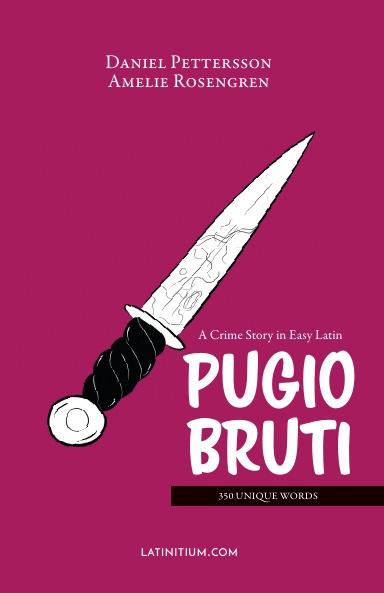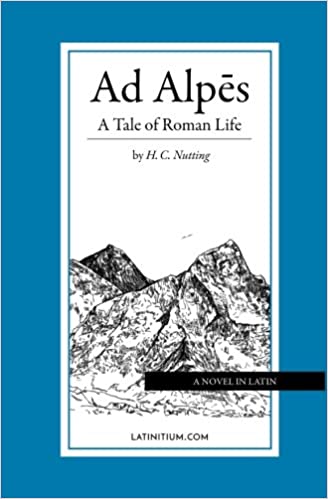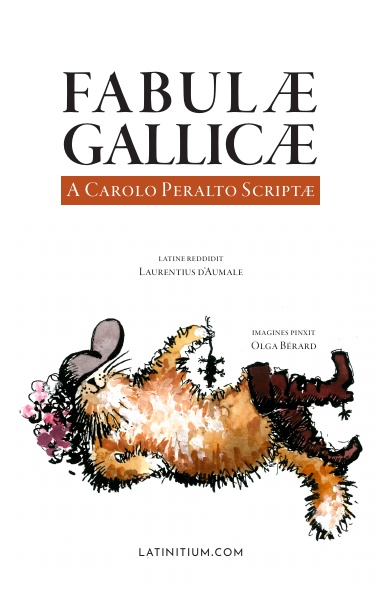Study roadmap
These are mainly books for beginners and intermediate students. See also: recommended books for beginners and intermediate learners, useful tools. If you want to see what I have in my library (editions, stylistics, etc.) go here.
Which are the best books for learning Latin?
Which are the best books for learning Latin? Which textbook, dictionary, grammar should I use? There are countless books out there, some popular, some more secret. We’ve tried them all with students, and found the best—with some room for bias.
Place monarch in line content upgrade here.
Our recommendations
Textbooks
Most textbooks promiss to much and underdeliver, but there are great ones too.
Readers
The only way to master Latin is to read a lot of Latin at your own level. There are a lot of badly written books, but also great ones.
Dictionaries
Studying grammar is rewarding and fun—as long as you have a suitable book.
Recommended textbooks
These are the best textbooks on the market to start learning and mastering Latin. We recommend you get several books and work through them to build a large vocabulary.
Familia Romana, (Lingua Latina per se Illustrata I)
Hans Ørberg
The best book to get a strong foundation in Latin, which I used to learn Latin. Entirely written in Latin, it takes you from sentences like “Roma in Italia est” to longer intermediate texts. Marginal notes and images help explain new words without translating. The book centers around a Roman family but adds in some classical Latin texts towards the end. This is where to start.
Exercitia Latina I: Exercises for Familia Romana, (Lingua Latina per se Illustrata I)
Hans Ørberg
While Familia Romana by it self is great, this exercise book provides you with countless opportunities to drill in the morphology, syntax, and vocabulary. When I learned Latin many years ago, I went through these exercises many times, both in writing and orally.
Colloquia Personarum, (Lingua Latina per se Illustrata I)
Hans Ørberg
These dialogues are written so that each dialogue corresponds in story and difficulty to a particular chapter in Familia Romana. If you study these three books diligently, you will develop a perfect foundation, so that you will never have to think about endings and basic grammar again—you will know it instinctively.
Assimil le latin sans peine
Clément Desessard
This book consists of 101 dialogues in Latin with a parallel translation in French. Some of the dialogues are silly conversations in everyday situations, while others are passages taken from Latin literature, from Plautus to a Early modern apothecary oath. Dialogue also comes with notes on grammar and vocabulary.
To get the most out of this book, you need to listen to the recordings of the all the dialogues over and over again to start to develop an intuitive understanding of Latin.
Although the translations and comments are in French, you could still get a lot out of the book by reading and listening to the dialogues. Without the French notes and translations, you should perhaps wait until you have a foundation in Latin.
Recommended readers
These are the best Latin readers, or books for extensive reading. They differ in level and scope, but you should strive to read them all, many times.
Ritchie’s Fabulae Faciles
Frank Ritchie
This is a really fun book to read with stories about Hercules, Odysseus, and Perseus in a rather Caesarian Latin. Read and reread this to build your vocabulary and knowledge about the myths in which Roman authors were steeped.
This edition has Latin text with facing vocabulary and commentary.
Pugio Bruti — A Crime story in Easy Latin
Daniel Pettersson, Amelie Rosengren
- Paperback
- Audiobook
- Online video course
When Terentia’s father dies he leaves her with a dagger and the words ”It will lead you to…”. Alone in Rome, Terentia goes out to find the secret behind her father’s dagger. But she is not the only one, and soon she is fighting for the dagger, its secret and her own future.
Pugio Bruti – A Crime Story in Easy Latin is written with two things in mind: To be a page-turning enjoyable book and to be a great study companion to Latin learners. The unique word count is less than 350 words, giving you easy Latin without compromising the exciting story.
It is written as true to classical Latin as possible with stylistic features, phraseology and dialogue patterns from Plautus, Terentius and Petronius, while still being an accessible book to learners of Latin. It is set in a historically authentic context and contains full Latin-English vocabulary.
Epitome Historiae Sacrae: Brevi Christi Vitae Narratione Addita
Charles Lhomond, Roberto Carfagni
Epitome Historiae Sacrae is a 17th century reader all in Latin (with long vowels marked) with stories from the Bible in an intermediate Latin. This edition has marginal notes explaining new or difficult words all in Latin. It has also exercises, including crosswords and matching.
The text will expand your vocabulary greatly.
When can you read it? You should finish Lingua Latina Part I: Familia Romana first to be able to read Epitome Historiae Sacrae without too much trouble.
Ad Alpes — A Tale of Roman Life (2017 edition)
H. C. Nutting
Ad Alpes is the best Latin reader out there. It is both a novel with its overarching narrative and a Latin reader with over 200-pages of stories in Latin from the ancient world.
- Improve your Latin: 200 pages in a classical Latin style for extensive reading.
- Read and enjoy Latin: Interesting stories from classical authors and the Bible.
- Read without the dictionary: Full Latin-English vocabulary.
Reading (or listening) to this book over and over again will give you a vast vocabulary and a good grasp of more advanced grammar.
Who can read it Ad Alpes? It is best to have a good grounding in Latin grammar and vocabulary before reading it.
Roma Aeterna, (Lingua Latina per se Illustrata)
Hans Ørberg
Roma Aeterna (the second main volume of the Lingua Latina per se illustrata series) takes the reader through Roman history and myth via passages from Roman historians and poets such as Livy, Sallust, and Ovid.
Before diving into Roman literature, Roma Aeterna first retells the first four books of Virgil’s Aeneid
Features:
- Latin immersion with vowel lengths marked
- Approximately 3,000 vocabulary words
- Short discussions of grammar and exercises for each chapter
- Selected readings that cover the material in a Roman history course
Who can read Roma Aeterna? Although the book is meant to be read after Familia Romana (and the ancillary books of the lingua Latina per se illustrata series, our students often find that there is too large a gap. We suggest reading and mastering Ad Alpes before reading Roma Aeterna.
Fabulae Gallicae — Fairytales in Latin
Charles Perrault (author), Laurent d’Aumale (translator)
Fabulae Gallicae is a Latin translation of Charles Perrault’s world of fairytales from 1697. It has a glossary in three languages: French, English, Spanish.
In the book, you’ll read eight classical fairytales:
- Cinerella – Cinderella
- Magae – Diamonds and Toads
- Barba Caerulea – Bluebeard
- Cucullus Ruber – Little Red Riding Hood
- Pollicellus – Little Thumbling
- Cattus Catus – Puss in Boots
- Asini Pellis – Donkeyskin
- Bella Puella in Silva Sopita – Sleeping Beauty
Who can read Fabulae Gallicae? You need to be at a rather advanced level to read it with ease, as it is written in a highly classicizing style.
Recommended Latin dictionaries
Having a good dictionary is crucial for learning Latin, but it’s hard to know which ones are good. Here are the best dictionaries, both large scholarly ones, and smaller ones for beginners and intermediate students.
The Bantam New College Latin & English Dictionary
John Traupman
Overview
- 708 pages
- Latin-English
- Notes on constructions
- Section on basic grammar
- Historical, geographical, mythological names’
The Bantam New College Latin & English Dictionary is a popular medium sized dictionary with 70’000 words and phrases. It has additional sections that might be of interest to beginners (e.g. pronunciation, grammar, history, mythology). In addition it also has an English-Latin section. Bantam stands out containing slang, vulgar expressions, and neo-Latin vocabulary.
Who should use it? This is a great dictionary if you want a good all-in-one resource, and be able to look up a word and get a general idea of its meaning. But for reading classical authors, I recommend a larger dictionary.
Cassell’s (standard) Latin Dictionary
D. P. Simpson
- 883 pages
- 200 B.C. to 100 A.D
- Latin-English
- English-Latin section
- Examples from Latin literature
- Sections with idiomatic expressions
Cassell’s Latin Dictionary is a very popular dictionary and rather comprehensive Latin dictionary, but what sets this apart from Bantam’s are the many examples of usage taken from Latin literature.
Who should use it? If you are studying Latin and reading Classical texts beyond a few sentences here and there, it is a very good dictionary. It gives most of what you need without being overwhelming
Lewis & Short (A Latin Dictionary)
Charlton Thomas Lewis, Charles Short
- 2000 pages
- Latin-English
- 2nd century B.C. –8th century A.D.
- Examples from literature
- Notes on usage and etymology
Lewis & Short is without a doubt the most commonly used Latin dictionary dictionary for learners and scholars out there. It is one of the most comprehensive dictionaries covering classical Latin as well as later Latin. It is also freely available online.
Who should use it? Advanced students and scholars: Although it has been criticised throughout the years for slight inaccuracies, both with regards to definitions, and, more particularly, to quantities, it is still the standard dictionary used by scholars today.
Oxford Latin DIctionary
P.W. Glare (editor)
- 2400 pages
- Ca. 200 B.C. to 200 A.D.
- Latin-English
- Examples from literature
- Based on modern editions
- Notes on usage and etymology
It’s an enormous work of 2400 pages, covering Latin up to 200 A.D., however, also excluding most Christan writers.
It stands apart from Lewis & Short in that it is not based on previous dictionaries but is a new work taking into consideration modern research.
One strength lies in the clear disposition of articles making finding the relevant sense comparatively easy for the reader.
Who should use it? If you are an advanced learner and want to dive deep into the different nuances and usages of words, it is a great resource.
Whats next?
Study roadmap
Follow the steps and guides below to avoid wasting time in your Latin studies.
1. Get the books
Get a textbook with exercises, a reader, and a dictionary. Make sure to read the books in the right order by following our plan.
2. Plan Your studies
Learning Latin takes time and planning to avoid bad habits. Use our learning guides instead.
3. Start learning
Now it’s time to start learning. Save time by following our practical guides.



























